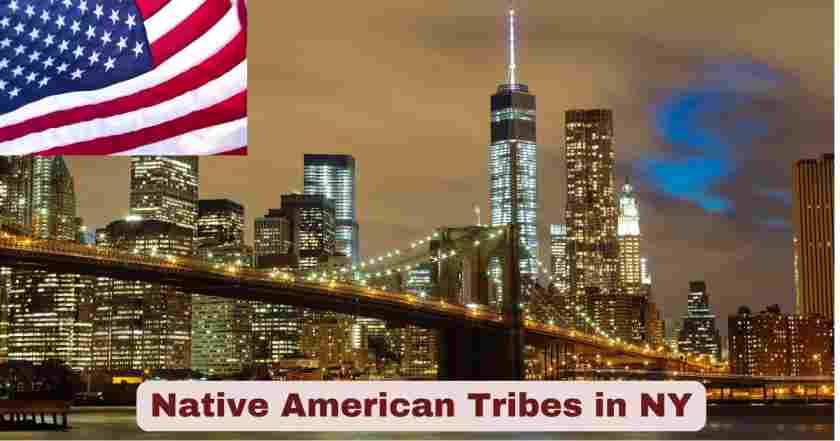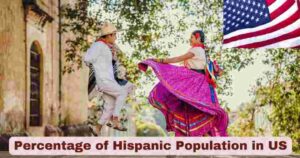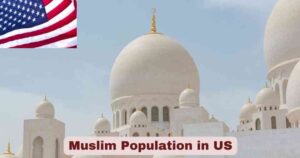Native American Tribes in New York 2025
The state of New York holds a deeply rooted connection with Indigenous peoples who have inhabited these lands for over 13,000 years. Long before European settlement transformed the landscape, Native American communities thrived throughout regions surrounding Lake Champlain, the Hudson River Valley, and Oneida Lake. These Indigenous nations developed sophisticated governance systems, cultural practices, and sustainable relationships with the land that continue to influence the state today. The rich heritage of these First Nations remains alive through their descendants, who maintain strong tribal identities and work tirelessly to preserve their languages, traditions, and sovereign rights.
Today, New York stands as home to eight federally recognized tribes and nine state-recognized nations, representing one of the most significant concentrations of Indigenous communities in the northeastern United States. These tribes maintain government-to-government relationships with both federal and state authorities, operating sovereign nations within New York’s borders. The Native American population in New York contributes substantially to the state’s cultural diversity, economic development, and historical preservation efforts. Understanding the current statistics and facts about these communities provides essential insight into their ongoing challenges, achievements, and vital role in shaping the future of the Empire State.
Interesting Stats & Facts About Native American Tribes in New York 2025
| Fact Category | Details | Year |
|---|---|---|
| Federally Recognized Tribes | 8 tribes with federal recognition status | 2024 |
| State-Recognized Nations | 9 nations recognized by New York State | 2024 |
| Total Nationwide Federally Recognized Tribes | 574 tribes across the United States | 2024 |
| Historical Presence | Over 13,000 years of continuous habitation | Archaeological Record |
| First American Indian Day | Celebrated in New York in May 1916 | 1916 |
| Haudenosaunee Confederacy | Six Nations confederacy including multiple NY tribes | Historic-Present |
| Land Acknowledgment | Original inhabitants of territories now comprising New York | Pre-Colonial |
| Reservation Count | 326 distinct federally recognized reservations nationwide | 2022 |
Data Source: Bureau of Indian Affairs Federal Register (December 2024), U.S. Census Bureau (2023), New York State Department of Environmental Conservation (2024)
Understanding New York’s Native American Demographics in 2025
The statistics presented above reveal the substantial Indigenous presence that continues throughout New York State. The eight federally recognized tribes represent sovereign nations that maintain unique government-to-government relationships with the United States. These tribes possess the authority to govern their own affairs, manage tribal lands, and preserve cultural heritage for future generations. Federal recognition provides these tribes access to specific federal services, funding opportunities, and legal protections established through treaties and federal Indian law.
New York’s recognition of nine state-recognized nations demonstrates the state’s commitment to acknowledging Indigenous sovereignty beyond federal designations. State recognition allows these nations to participate in consultations regarding natural resources, cultural preservation, and matters affecting tribal interests within New York. The fact that Native Americans have maintained continuous presence in New York for over 13,000 years underscores the profound historical depth of Indigenous connection to these lands. This temporal span far exceeds the roughly 400 years of European and American governance, highlighting the enduring legacy of First Nations peoples. The celebration of the first American Indian Day in New York in 1916 marked a pivotal moment in recognizing Indigenous contributions, paving the way for the eventual establishment of National American Indian Heritage Month observed every November since 1990.
Native American Population Statistics in New York 2020-2023
| Population Metric | Number | Percentage | Year |
|---|---|---|---|
| Native Americans in New York State | 106,906 | 0.55% | 2020 Census |
| American Indian Alone Population | 73,560 | 0.38% | 2022 Estimate |
| Native Americans in New York City | Over 111,000 | 1.4% of NYC | 2020 Census |
| National Native American Population (Alone) | 3.7 million | 1.1% | 2020 Census |
| National Native American Population (Combination) | 9.7 million | 2.9% | 2020 Census |
| New York State Ranking | 10th largest | National ranking | 2022 |
| Projected US Native Population | 10 million | Growth projection | 2060 |
Data Source: U.S. Census Bureau 2020 Census, American Community Survey 2022, Census Bureau Population Estimates
Analysis of Native American Population Trends in New York 2020-2023
The 2020 Census data reveals that New York is home to 106,906 Native Americans, representing approximately 0.55% of the state’s total population. This figure places New York as the 10th largest state by Native American population in absolute numbers, demonstrating the significant Indigenous presence within the Empire State. The distinction between “alone” and “in combination” population counts reflects the Census Bureau’s methodology for capturing multiracial identity. The 73,560 individuals who identify as American Indian alone represents those reporting exclusively Native American heritage, while the larger combined figure accounts for individuals who identify as Native American alongside other racial or ethnic backgrounds.
New York City itself contains a substantial portion of the state’s Indigenous population, with over 111,000 Native Americans residing within the five boroughs, comprising approximately 1.4% of the city’s population. This urban concentration reflects broader patterns of Native American migration to metropolitan areas for education, employment, and opportunity while maintaining cultural connections to tribal communities. Nationally, the 3.7 million people who identify as American Indian or Alaska Native alone, and the 9.7 million reporting this heritage in combination with other races, represents a significant demographic presence across the United States. The projected growth to 10 million Native Americans by 2060 suggests increasing population recovery after centuries of decline due to disease, displacement, and historical trauma, alongside growing recognition and pride in Indigenous identity among multiracial individuals.
Federally Recognized Tribes in New York 2024
| Tribe Name | Primary Location | Confederacy Affiliation | Federal Recognition |
|---|---|---|---|
| Cayuga Nation | Seneca Falls region | Haudenosaunee (Iroquois) | Yes |
| Oneida Indian Nation | Central New York | Haudenosaunee (Iroquois) | Yes |
| Onondaga Nation | South of Syracuse | Haudenosaunee (Iroquois) | Yes |
| Saint Regis Mohawk Tribe | Northern New York (Akwesasne) | Haudenosaunee (Iroquois) | Yes |
| Seneca Nation of Indians | Western New York | Haudenosaunee (Iroquois) | Yes |
| Shinnecock Indian Nation | Eastern Long Island | Algonquian peoples | Yes |
| Tonawanda Band of Seneca | Western New York | Haudenosaunee (Iroquois) | Yes |
| Tuscarora Nation | Niagara County | Haudenosaunee (Iroquois) | Yes |
Data Source: Bureau of Indian Affairs Federal Register Notice (December 11, 2024), Federal Register Vol. 89 No. 238
Understanding Federal Recognition and Tribal Sovereignty in New York 2024
The eight federally recognized tribes in New York represent sovereign nations with inherent rights to self-governance predating the formation of the United States. Federal recognition, published annually by the Bureau of Indian Affairs in the Federal Register, confirms these tribes’ eligibility for federal funding, services, and protection of treaty rights. Six of the eight federally recognized tribes in New York belong to the Haudenosaunee Confederacy, also known as the Iroquois Confederacy, one of the oldest participatory democracies in the world. The Haudenosaunee system of governance influenced the development of democratic principles incorporated into the United States Constitution, though this contribution remained largely unacknowledged for centuries.
The Cayuga Nation, Oneida Indian Nation, Onondaga Nation, Saint Regis Mohawk Tribe, Seneca Nation of Indians, Tonawanda Band of Seneca, and Tuscarora Nation all maintain distinct governmental structures, cultural practices, and territorial claims within New York. The Shinnecock Indian Nation, located on eastern Long Island, represents the Algonquian cultural tradition and achieved federal recognition in 2010 after decades of advocacy. Each federally recognized tribe maintains government-to-government relationships with both the United States and New York State, participating in consultations on matters affecting tribal interests including land use, natural resource management, cultural preservation, and economic development. The Saint Regis Mohawk Tribe occupies the unique transnational territory of Akwesasne, which spans the borders of New York, Ontario, and Quebec, requiring coordination with multiple governmental jurisdictions while maintaining tribal sovereignty.
State-Recognized Native American Nations in New York 2024
| Nation Name | Recognition Type | Primary Territory | Cultural Group |
|---|---|---|---|
| Cayuga Nation | Federal and State | Seneca Falls region | Haudenosaunee |
| Oneida Indian Nation | Federal and State | Central New York | Haudenosaunee |
| Onondaga Nation | Federal and State | Onondaga County | Haudenosaunee |
| Saint Regis Mohawk Tribe | Federal and State | Franklin County | Haudenosaunee |
| Seneca Nation of Indians | Federal and State | Cattaraugus, Allegany | Haudenosaunee |
| Shinnecock Indian Nation | Federal and State | Suffolk County | Algonquian |
| Tonawanda Seneca Nation | Federal and State | Genesee County | Haudenosaunee |
| Tuscarora Nation | Federal and State | Niagara County | Haudenosaunee |
| Unkechaug Indian Nation | State Only | Suffolk County | Algonquian |
Data Source: New York State Department of Environmental Conservation (2024), Commissioner Policy 42
State Recognition and Government-to-Government Relations in New York 2024
New York State recognizes nine Native American nations for the purpose of government-to-government consultation, eight of which also hold federal recognition. The Unkechaug Indian Nation, located on the Poospatuck Reservation in Suffolk County, holds state recognition but not federal recognition, creating a unique jurisdictional status. State recognition in New York allows these nations to participate in consultations regarding natural resources, cultural site protection, and subsistence activities including hunting, fishing, and gathering rights. The New York State Department of Environmental Conservation maintains these relationships through Commissioner Policy 42, which establishes protocols for meaningful consultation with Indigenous nations on matters affecting tribal interests.
Government-to-government consultation represents a legal obligation requiring New York State agencies to engage with tribal leadership on an equal governmental footing rather than treating tribes as stakeholder groups or special interest organizations. This framework acknowledges that Indigenous nations possess inherent sovereignty that existed before European colonization and continues today. The Seneca Nation of Indians maintains two primary territories at the Allegany and Cattaraugus Reservations in western New York, demonstrating how tribal lands exist as distinct jurisdictions within state boundaries. Consultation topics include environmental impacts to reservation lands, water and air quality affecting tribal territories, protection of archaeological sites and burial grounds, and management of natural resources essential to cultural practices. Early engagement with tribal nations allows adequate time for communities to review proposals and provide meaningful input, recognizing that many tribes operate with limited staff and resources compared to state agencies.
Historical Context and Land Dispossession in New York 2024
| Historical Event | Time Period | Impact | Territory Affected |
|---|---|---|---|
| Pre-Contact Indigenous Occupation | 13,000+ years ago | Establishment of territories | Entire New York State |
| Haudenosaunee Confederacy Formation | Pre-1142 CE | Political unification | Central and Western NY |
| Dutch Colonization | 1624–1664 | Initial land pressures | Hudson River Valley |
| British Colonial Period | 1664–1783 | Treaty negotiations | Statewide |
| American Revolution | 1775–1783 | Tribal displacement | Haudenosaunee territories |
| Treaty Period | 1784–1842 | Major land cessions | Western and Central NY |
| Reservation System Establishment | 1794–1842 | Confinement to small territories | Current reservation lands |
Data Source: New York State Museum, Historical Records, Federal Treaty Archives
Understanding Indigenous Land Loss and Sovereignty Issues in New York 2024
The history of Native American tribes in New York centers fundamentally on land dispossession and the struggle to maintain territorial sovereignty. Archaeological evidence confirms that Indigenous peoples inhabited what is now New York State for over 13,000 years, establishing complex societies, agricultural systems, and trade networks long before European contact. The formation of the Haudenosaunee Confederacy before 1142 CE created one of the world’s earliest federal systems, uniting the Mohawk, Oneida, Onondaga, Cayuga, and Seneca nations (later joined by the Tuscarora) under a constitution known as the Great Law of Peace. This sophisticated governance structure influenced colonial and American political thought, though historians debated and often minimized these contributions for centuries.
The American Revolution (1775-1783) devastated Haudenosaunee communities as most nations sided with the British, leading to deliberate military campaigns destroying Indigenous villages and agricultural lands. Post-Revolutionary treaties between 1784 and 1842 systematically transferred millions of acres of Indigenous territory to New York State and private interests, often through fraudulent negotiations violating federal law. The Treaty of Canandaigua (1794) between the United States and the Six Nations guaranteed remaining Haudenosaunee lands, yet subsequent state treaties illegally obtained additional territories without federal oversight as required by the Indian Trade and Intercourse Act. Contemporary land claims by New York tribes seek to address these historical injustices, asserting that illegally obtained lands should be returned or compensated. The current reservation system confines Indigenous nations to small fractions of their original territories, with the largest New York reservations measuring tens of thousands of acres compared to the millions of acres comprising ancestral homelands.
Native American Economic Impact in New York 2023
| Economic Sector | Contribution | Description | Year |
|---|---|---|---|
| Gaming Revenue | Billions annually | Tribal casino operations | 2023 |
| Employment | Thousands of jobs | Tribal government and enterprises | 2023 |
| Small Business | Growing sector | Native-owned businesses statewide | 2023 |
| Tourism | Cultural tourism | Museums, cultural centers, events | 2023 |
| Agriculture | Traditional and modern | Farming operations on tribal lands | 2023 |
| Arts and Crafts | Cultural economy | Traditional arts, contemporary work | 2023 |
| Government Services | Tribal operations | Healthcare, education, public safety | 2023 |
Data Source: New York State Gaming Commission, Tribal Economic Reports, Bureau of Indian Affairs
Economic Development and Tribal Enterprise in New York 2023
Native American tribes in New York have developed significant economic operations that generate billions of dollars annually in revenue while providing employment for thousands of tribal members and surrounding community residents. The gaming industry represents the largest economic sector for several New York tribes, with facilities operated by the Oneida Indian Nation, Saint Regis Mohawk Tribe, and Seneca Nation attracting millions of visitors yearly. These gaming operations function under tribal sovereignty and gaming compacts negotiated with New York State, allowing tribes to operate casinos while contributing revenue sharing payments to state and local governments. The Turning Stone Resort Casino operated by the Oneida Indian Nation stands as the largest private employer in Oneida County, demonstrating how tribal economic development benefits entire regions beyond reservation boundaries.
Beyond gaming, Native American tribes in New York operate diverse enterprises including retail operations, hospitality businesses, cultural tourism venues, and agricultural operations. The Seneca Nation operates multiple convenience stores, gas stations, and tobacco outlets leveraging sovereignty-based tax advantages while creating employment opportunities for tribal members. Cultural tourism initiatives allow tribes to share their heritage with visitors through museums, cultural centers, and traditional events while generating revenue supporting language preservation, educational programs, and cultural revitalization efforts. Traditional arts including beadwork, basket weaving, pottery, and contemporary Indigenous art create economic opportunities for Native artisans while maintaining cultural practices passed through generations. Tribal governments themselves constitute major economic entities, operating healthcare facilities, educational institutions, housing authorities, and public safety departments that employ tribal members in professional roles while serving community needs.
Healthcare and Social Services for Native Americans in New York 2023
| Service Category | Provider | Population Served | Scope |
|---|---|---|---|
| Indian Health Service | Federal agency | 2.6 million nationally | Healthcare services |
| Tribal Health Centers | Tribal governments | Tribal members and families | Primary care |
| Mental Health Services | Tribal and contracted | Indigenous communities | Behavioral health |
| Substance Abuse Programs | Tribal and federal | At-risk populations | Treatment and prevention |
| Traditional Medicine | Tribal practitioners | Community members | Cultural healing |
| Social Services | Tribal programs | Eligible tribal members | Various support programs |
| Education Support | Tribal and federal | Students | Scholarships, tutoring |
Data Source: Indian Health Service (2023), Department of Health and Human Services, Tribal Government Reports
Health Disparities and Service Access in New York 2023
The Indian Health Service (IHS) provides comprehensive healthcare delivery for approximately 2.6 million American Indians and Alaska Natives nationwide who belong to 574 federally recognized tribes across 37 states. However, Native Americans continue experiencing significant health disparities compared to other racial and ethnic groups, including higher rates of diabetes, heart disease, substance abuse disorders, and mental health challenges. These health inequities stem from historical trauma, socioeconomic disadvantages, geographic isolation of some reservation communities, and chronic underfunding of Indian Health Service facilities. Native Americans face the highest poverty rate of any major racial group, with one in four people living below the poverty line, directly impacting health outcomes and access to nutritious food, safe housing, and preventive healthcare services.
New York tribes operate tribal health centers providing primary care, dental services, behavioral health support, and preventive medicine to tribal members and their families. These facilities integrate Western medical practices with traditional healing approaches, recognizing that Indigenous wellness encompasses physical, mental, emotional, and spiritual dimensions. Mental health and substance abuse services address intergenerational trauma resulting from colonization, forced assimilation policies, and ongoing marginalization of Indigenous communities. Traditional medicine practitioners maintain knowledge of medicinal plants, ceremonial healing practices, and Indigenous wellness philosophies that sustained communities for millennia before Western medical systems arrived. Tribal social services programs provide support including elder care, child welfare services, housing assistance, food security programs, and emergency aid addressing immediate needs while working toward long-term community wellness. Educational support services help tribal youth access scholarships, tutoring programs, and college preparation resources, recognizing that education creates pathways toward economic self-sufficiency and community leadership.
Cultural Preservation and Language Revitalization in New York 2024
| Initiative Type | Focus Area | Implementing Organizations | Status |
|---|---|---|---|
| Language Programs | Indigenous language instruction | Tribal education departments | Active |
| Cultural Centers | Heritage education and events | Multiple tribes | Operating |
| Archaeological Protection | Site preservation | State and tribal collaboration | Ongoing |
| Traditional Arts | Skills transmission | Tribal cultural programs | Active |
| Oral History Projects | Elder knowledge recording | Tribal archives | In progress |
| Ceremonial Practices | Spiritual traditions | Longhouses and communities | Continuous |
| Museum Partnerships | Artifact repatriation | State and tribal museums | Advancing |
Data Source: New York State Department of Environmental Conservation, Tribal Cultural Programs, State Museum Reports
Language Endangerment and Revitalization Efforts in New York 2024
Indigenous languages in New York face critical endangerment as fluent speakers age and younger generations increasingly communicate primarily in English. The Haudenosaunee languages—including Mohawk, Oneida, Onondaga, Cayuga, Seneca, and Tuscarora—represent distinct linguistic traditions carrying thousands of years of cultural knowledge, philosophy, and worldview. Language death eliminates irreplaceable repositories of traditional ecological knowledge, ceremonial protocols, kinship systems, and cultural concepts lacking direct English translations. Recognizing this crisis, tribal education departments implement immersion programs, adult language classes, and digital learning resources aimed at increasing the number of speakers across all age groups. The Saint Regis Mohawk Tribe operates the Akwesasne Freedom School, an immersion school where instruction occurs entirely in Mohawk language, demonstrating one model for intergenerational language transmission.
Cultural centers operated by New York tribes serve as community gathering spaces for ceremonies, social events, educational programs, and cultural transmission activities connecting youth with elders and traditional knowledge. These facilities host traditional arts workshops teaching beadwork, basket making, pottery, carving, and other Indigenous artistic practices requiring hands-on mentorship for skills transmission. Archaeological site protection involves collaboration between tribal historic preservation officers and state agencies ensuring that construction projects, agricultural activities, and development plans respect Indigenous burial grounds, village sites, and ceremonially significant locations. The Native American Graves Protection and Repatriation Act (NAGPRA) requires federal agencies and institutions receiving federal funding to return cultural items, sacred objects, and human remains to lineal descendants and culturally affiliated tribes, enabling tribes to rebury ancestors according to traditional protocols and reunite communities with stolen cultural patrimony.
Education and Youth Programs in New York 2023
| Program Type | Participants | Objectives | Funding Sources |
|---|---|---|---|
| Tribal Schools | K-12 students | Culturally responsive education | Tribal and federal |
| Higher Education Scholarships | College students | Degree completion support | Tribal and private |
| Summer Youth Programs | Elementary-high school | Cultural education and recreation | Tribal programs |
| Tutoring Services | At-risk students | Academic achievement support | Educational grants |
| STEM Initiatives | Middle-high school | Science and technology skills | Federal and foundation |
| Cultural Immersion | All ages | Language and tradition learning | Tribal budgets |
| Career Development | Young adults | Job training and placement | Workforce programs |
Data Source: Bureau of Indian Education, Tribal Education Departments, Foundation Reports
Educational Attainment and Opportunity Gaps in New York 2023
Educational outcomes for Native American students in New York reflect persistent disparities requiring targeted interventions and culturally responsive pedagogies. Tribal schools and education departments work to provide learning environments affirming Indigenous identity while meeting state academic standards, incorporating traditional knowledge alongside conventional curricula. Culturally responsive education recognizes that Indigenous students thrive when curriculum connects with their heritage, includes Native American historical perspectives often omitted from standard textbooks, and employs teaching methods compatible with Indigenous learning styles emphasizing observation, experiential learning, and community connection rather than exclusively individual competition and standardized testing.
Higher education scholarship programs funded by tribal governments, federal sources, and private foundations help Native American students access college education despite financial barriers disproportionately affecting Indigenous families. These programs recognize that educational attainment creates pathways to professional careers, tribal leadership positions, and community service roles while helping preserve cultural knowledge through educated community members. Summer youth programs combine recreational activities with cultural education, providing safe, enriching environments during school breaks while connecting young people with their heritage through traditional games, storytelling, arts instruction, and land-based learning activities. STEM initiatives aim to increase Native American representation in science, technology, engineering, and mathematics fields where Indigenous peoples remain severely underrepresented, despite traditional Indigenous knowledge systems containing sophisticated scientific and mathematical concepts developed through millennia of observation and experimentation.
Environmental Stewardship and Natural Resource Management in New York 2024
| Resource Type | Traditional Use | Management Approach | Legal Framework |
|---|---|---|---|
| Hunting Rights | Subsistence and cultural | Treaty-protected activities | Federal and state treaties |
| Fishing Rights | Food and ceremony | Tribal regulation and access | Reserved rights doctrine |
| Gathering Rights | Medicinal and ceremonial plants | Sustainable harvesting | Traditional ecological knowledge |
| Water Resources | Life necessity and spiritual | Watershed protection | Clean Water Act, tribal codes |
| Forestry | Building materials and fuel | Sustainable forest management | Tribal forestry programs |
| Wildlife Management | Cultural and subsistence | Co-management arrangements | Government-to-government agreements |
| Land Restoration | Ecosystem health | Traditional practices integration | Environmental partnerships |
Data Source: New York State DEC Commissioner Policy 42, Tribal Environmental Programs, Federal Environmental Regulations
Traditional Ecological Knowledge and Contemporary Conservation in New York 2024
Native American tribes in New York possess traditional ecological knowledge developed through thousands of years of intimate relationship with the land, water, plants, and animals comprising their ancestral territories. This knowledge encompasses sophisticated understanding of species behavior, seasonal patterns, ecosystem relationships, and sustainable resource management practices that maintained biodiversity and productivity throughout millennia of Indigenous stewardship. Contemporary environmental science increasingly recognizes that traditional ecological knowledge offers critical insights for addressing climate change, biodiversity loss, and ecosystem degradation, as Indigenous land management practices often prove more sustainable than industrial approaches prioritizing short-term extraction over long-term ecosystem health.
Treaty-protected hunting, fishing, and gathering rights affirm that tribes reserved these activities when ceding land to the United States, recognizing that access to traditional foods and materials remains essential to Indigenous cultural continuity and food sovereignty. The reserved rights doctrine establishes that tribes retained all rights not explicitly ceded in treaties, meaning that hunting, fishing, and gathering rights exist unless specifically relinquished—a presumption often reversed in historical practice but increasingly recognized in contemporary legal interpretations. New York State’s consultation protocols require agencies to engage tribal nations regarding projects affecting water quality, air quality, wetlands, fisheries, wildlife, and other natural resources of tribal interest, acknowledging that environmental degradation of off-reservation lands still impacts treaty-protected resources and tribal members’ ability to exercise reserved rights. Collaborative wildlife management arrangements enable tribes to participate in decisions regarding species populations, harvest regulations, and habitat protection, integrating traditional knowledge with contemporary wildlife biology to develop more comprehensive and culturally appropriate management strategies.
Future Outlook
The trajectory for Native American tribes in New York shows both promising developments and persistent challenges requiring sustained attention from tribal leadership, state government, and society at large. Economic diversification beyond gaming operations will prove essential as tribes develop sustainable revenue sources through renewable energy projects, agricultural enterprises, technology ventures, and cultural tourism initiatives leveraging Indigenous heritage while maintaining cultural integrity. The growing recognition of Indigenous rights within environmental policy creates opportunities for tribes to assert treaty-protected interests in land use decisions, participate meaningfully in climate change adaptation planning, and restore traditional ecological management practices benefiting entire ecosystems. Younger generations of tribal members pursue higher education in unprecedented numbers, preparing to assume leadership roles in tribal governance, healthcare, education, legal advocacy, and cultural preservation while maintaining connections to traditional knowledge and community values.
Language revitalization efforts face critical urgency as fluent elder speakers pass away, but innovative approaches including technology-assisted learning, immersion schools, and intergenerational programming show potential for reversing decades of language decline. Legal battles over land claims, sovereignty issues, and treaty rights will continue requiring significant resources and political will, yet recent court decisions increasingly recognize Indigenous rights and historical injustices demanding redress. The broader societal reckoning with colonial history creates openings for honest dialogue about Indigenous dispossession, cultural genocide through boarding schools and forced assimilation policies, and ongoing systemic marginalization of Native Americans. Success will require not only tribal resilience and innovation but also meaningful partnerships with government entities, sustained adequate funding for tribal programs and services, respect for tribal sovereignty, and societal commitment to addressing the historical and contemporary injustices that Native American communities continue confronting daily.
Disclaimer: The data research report we present here is based on information found from various sources. We are not liable for any financial loss, errors, or damages of any kind that may result from the use of the information herein. We acknowledge that though we try to report accurately, we cannot verify the absolute facts of everything that has been represented.







